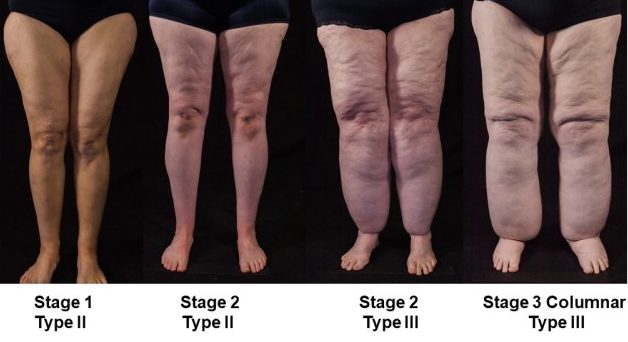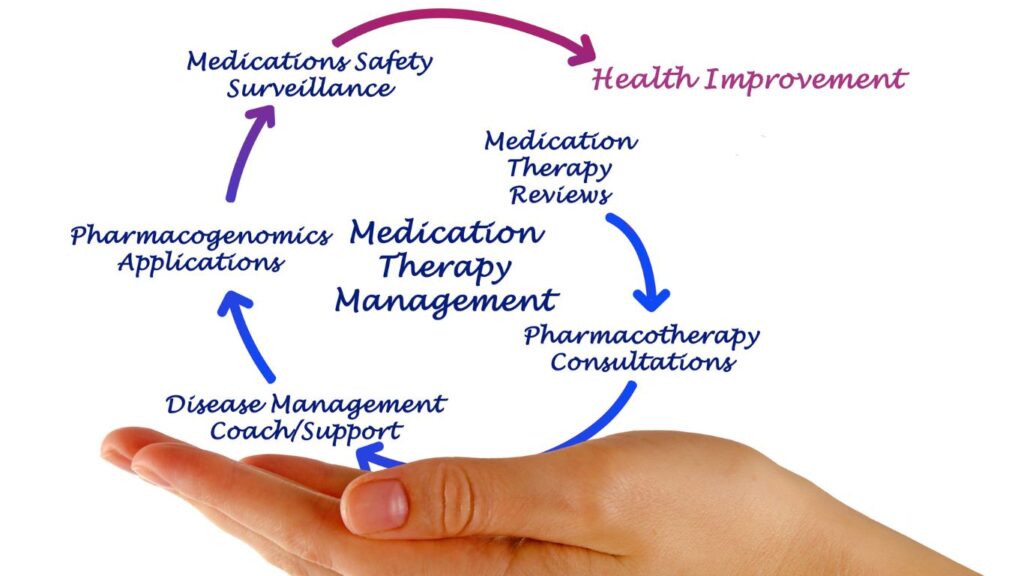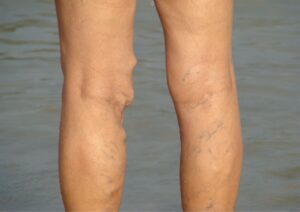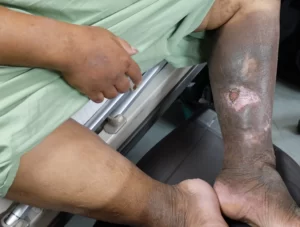Lipedema, also known as lipoedema, is a chronic condition characterised by an abnormal accumulation of fat cells in certain areas of the body, typically the legs and sometimes the arms.
Unlike general obesity, lipedema fat is resistant to diet and exercise, and affected individuals often have a disproportionate body shape with enlarged lower limbs compared to the upper body.
Lipedema can cause pain, tenderness, swelling, and bruising in the affected limbs and areas, which can significantly impact a person’s physical and emotional well-being.
It is important to raise awareness about lipedema to promote early diagnosis and appropriate management.
In this article, we will delve into the causes, symptoms, and available treatment options for lipedema, providing valuable information and support for those affected by this condition.
What Are The Symptoms of Lipoedema?
Lipoedema is a condition characterised by a specific set of symptoms that primarily affect the distribution and appearance of fat in the body. The main symptoms of lipoedema include:
1. Enlarged Lower Limbs:
One of the hallmark signs of lipoedema is the disproportionate enlargement of the lower limbs, such as the hips, thighs, buttocks, and lower legs. The affected areas often have a distinct “column-like” or “pear-shaped” appearance, with a smaller upper body compared to the lower body.
2. Bilateral Symmetry:
Lipoedema typically affects both sides of both legs sometimes arms of the body symmetrically, meaning that if one leg is affected, the other leg will also be affected to the same extent or a similar extent.
3. Easy Bruising:
Individuals with lipoedema may experience easy bruising or a tendency for hardened skin to bruise easily develop bruises even with minimal trauma. The skin over the affected areas can be sensitive and prone to discoloration.
4. Tenderness and Pain:
Lipoedema can cause tenderness tissue swelling and pain in the affected areas. The discomfort can range from aching or heaviness to more severe pain, especially with pressure or movement of swollen skin fatty tissue.
5. Swelling:
Lipoedema can be associated with swelling or fluid retention in lymph fluid in the affected limbs, both legs which can worsen throughout the day or during prolonged standing or sitting.
6. Disproportionate Fat Accumulation:
Unlike general weight gain, people with lipoedema, fat is resistant to diet and exercise. Even with a healthy lifestyle, individuals with lipoedema often gain weight and find it difficult to reduce the size of fat affects their affected areas through weight loss alone.
If you experience these symptoms, it is important to consult with a healthcare professional for an accurate diagnosis and appropriate management strategies.

What Are The 3 Stages Of Lipoedema?
Stage 1 Lipedema:
In Stage 1 of lipedema, the characteristic symptoms start to become noticeable. The affected areas, usually the hips, thighs, and buttocks, begin to exhibit a disproportionate accumulation of fat. The skin texture may appear smooth and there are usually no visible structural changes or fatty tissue. The affected areas may feel tender to the touch, and individuals may experience discomfort or heaviness in those regions. Stage 1 lipedema is typically not associated with significant swelling or fluid retention.
Stage 2 Lipedema:
In Stage 2 of lipedema, the condition progresses, and the symptoms become more pronounced. The fat accumulation in the affected areas increases, leading to a greater disparity in size compared to the rest of the body. The skin of people with lipoedema may start to develop a nodular or lumpy texture, and small indentations or depressions known as “mattress-like” or “orange peel” skin can appear. The tenderness and sensitivity in the affected areas may intensify, and there may be an increased likelihood of bruising. Some individuals may also experience mild swelling.
Stage 3 Lipedema (aka lipo-lymphedema):
Stage 3 lipedema is the most advanced and severe stage of the condition. The affected areas exhibit a significant accumulation of fat, leading to a very disproportionate and enlarged appearance. The skin becomes even more irregular and fibrotic, with a nodular or lobulated texture. The swelling and fluid retention in the affected areas become more prominent, and individuals treat lipoedema may experience significant discomfort, pain, and difficulty with mobility. The presence of secondary lymphedema, known as a lipoedema-lymphedema, becomes more likely, and people with lipoedema have accompanying symptoms such as increased swelling, tissue fibrosis, and a higher risk of infections.
It’s important to note that lipedema progresses differently for each individual, and the symptoms and stages can vary. Consulting with a healthcare professional who specialises in lipedema can provide a more accurate assessment and personalised treatment plan.
What Causes Lipoedema ?
The exact cause of lipedema is still not fully understood. However, several factors are believed to contribute to its development. These factors include:
1. Hormonal Factors:
Hormonal imbalances, particularly involving oestrogen, have been suggested as a possible cause of lipedema affects women. This is supported by the fact that lipedema predominantly affects women and often begins or worsens during hormonal changes, such as female hormones such as puberty, pregnancy, or menopause.
2. Genetic Factors:
There is evidence to suggest that lipedema may have a genetic component. It often runs in families, and studies have identified specific gene mutations associated with the condition. However, more research is needed to fully understand the genetic factors involved.

3. Hormone Receptor Abnormalities:
Lipedema is characterised by an abnormal distribution of fat cells in adipose tissue. It is believed that the hormone receptors in the affected fat cells are altered, leading to abnormal fat accumulation.
4. Inflammation and Microcirculation Dysfunction:
Inflammatory processes and microcirculation dysfunction are thought to play a role in the development and progression of lipedema. These factors contribute to increased permeability of blood vessels, fluid retention, and the accumulation of inflammatory cells in lymph vessels and the affected fatty tissue itself.
It’s important to note that while these risk factors may contribute to the development of lipedema, they do not necessarily guarantee its occurrence. The condition is likely to result from a combination of genetic predisposition and environmental factors. Further research is needed to gain a better understanding of the causes and underlying mechanisms of lipedema.

How Do You Treat Lipoedema?
In Australia, the treatment of lipedema typically involves a multidisciplinary approach aimed at managing the symptoms and improving the overall quality of life for individuals with the condition. Here are some common treatment approaches used in Australia:
1. Conservative Measures:
Conservative measures focus on lifestyle modifications to manage symptoms. This includes regular exercise, such as low-impact activities like swimming or walking, as well as maintaining a healthy diet to manage weight and reduce inflammation.
2. Compression Therapy:
Compression to wear compression garments that, such as wear compression garments such as the compression garments, stockings or bandages, are often recommended to help reduce swelling and provide support to the affected areas. These special compression garments help improve circulation and minimize discomfort.
3. Manual Lymphatic Drainage (MLD):
MLD is a specialised massage technique performed by a trained therapist. It aims to stimulate the lymphatic system and improve lymphatic flow, thereby reducing swelling and discomfort associated with lipedema.

4. Anti-Inflammatory Diet
An anti-inflammatory diet is a way of eating that focuses on reducing inflammation in the body, which is believed to contribute to various chronic diseases and conditions. It emphasises the consumption of whole, nutrient-dense foods while minimising processed foods, refined sugars, and unhealthy fats. Key principles of an anti-inflammatory diet include focusing on fruits and vegetables, choosing healthy fats, including lean proteins, eating whole grains, minimising processed foods, limiting added sugars, and staying hydrated. It is important to consult with a healthcare professional or a registered dietitian before making significant changes to your diet to ensure that the diet aligns with your specific health needs and goals.
5. Physical Therapy:
Physical therapy may be beneficial in reducing pain and managing lipedema symptoms. Therapists can provide guidance on specific exercises, stretching techniques, and strength training to improve mobility, reduce pain, and enhance overall function.

6. Surgical Intervention:
In advanced cases of lipedema, surgical intervention may be considered. Liposuction techniques, such as tumescent liposuction or water-assisted liposuction, can help remove excess fat deposits and reshape the affected areas. However, it’s important to consult with a qualified surgeon experienced in lipedema treatment to assess the suitability and potential benefits of surgery.
It’s crucial to work closely with a healthcare professional who has experience in lipedema management. They can provide personalised treatment recommendations based on your specific condition and needs
FAQ
Lipedema is a condition characterised by the disproportionate accumulation of fat, typically in the hips, thighs, buttocks, large or swollen legs, and sometimes even the arms. It is important to consult with a healthcare professional for a proper diagnosis, as there are signs and symptoms commonly associated with lipedema. These include bilateral and symmetrical fat deposition distribution, disproportionate fat accumulation, column-like or tree trunk appearance, easy bruising and sensitivity, pain and tenderness, swelling and oedema, and tissue swelling and fluid retention. If you observe these symptoms, it is important to consult with a healthcare professional to diagnose lipedema. They will conduct a physical examination, review your medical and family history, and may order additional tests or imaging studies to rule out other conditions and confirm a diagnosis of lipedema.
Lipedema fat is often resistant to traditional weight loss methods, such as diet and exercise. However, weight management and a healthy lifestyle can still play a role in managing the overall symptoms and progression of lipedema. In some cases, surgical interventions such as liposuction techniques may be considered to selectively remove the excess fluid and fat deposits. It is important to consult with a healthcare professional who has experience in lipedema management to discuss the available options, including lifestyle modifications and potential surgical interventions, and to develop an individualised treatment plan based on your specific needs and goals.
Losing weight with lipedema can be challenging, but there are still steps you can take to support overall health and manage your weight. These include focusing on a healthy balanced diet, regular physical activity, seeking professional guidance, wearing compression garments, and seeking emotional support. The primary goal of managing lipedema is to improve quality of life and minimise symptoms. Adopting a healthy lifestyle, including a balanced diet, regular exercise, and seeking appropriate medical care, can help support your overall well-being.










